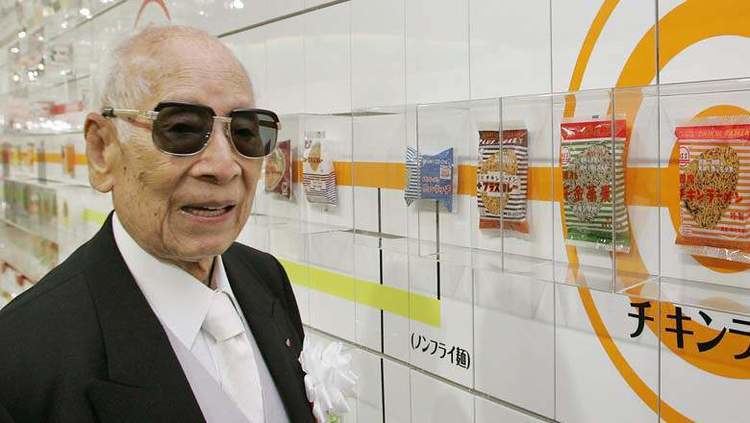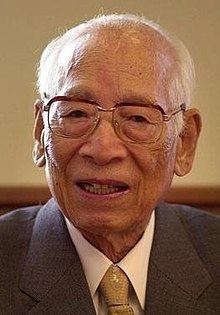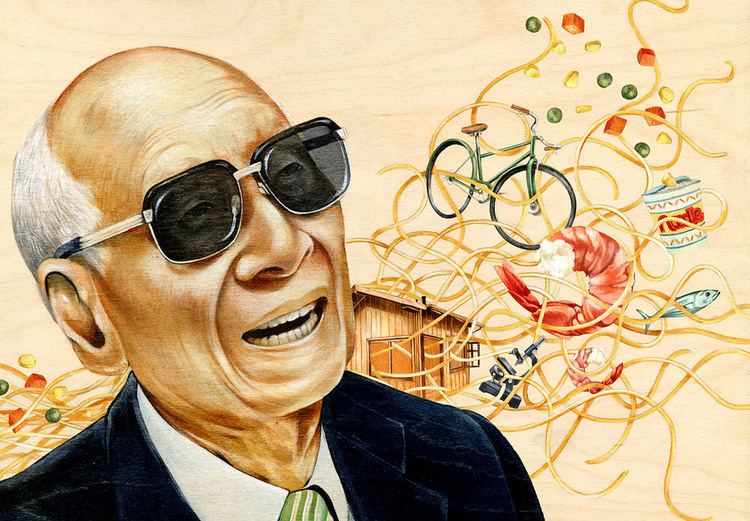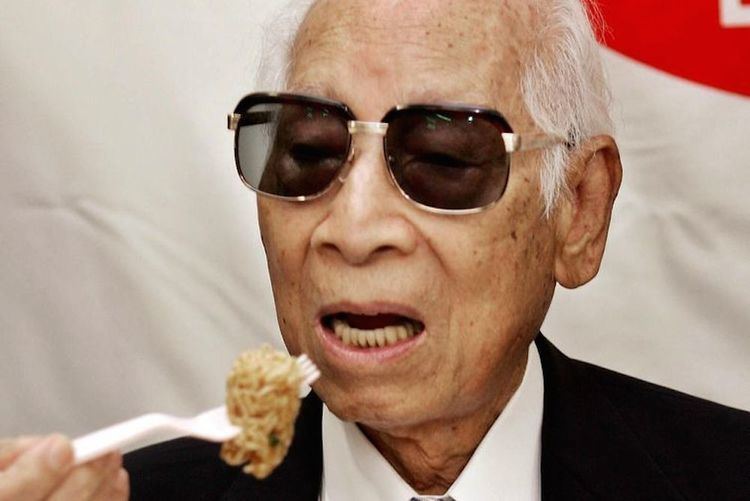Nationality Japanese/Taiwanese Spouse Masako Ando (m. ?–2007) | Name Momofuku Ando Role Inventor | |
 | ||
Known for Inventor of instant noodles Children Koki Ando, Hirotoshi Ando, Akemi Horinouchi | ||
Organizations founded Nissin Foods | ||
Google doodle momofuku ando s 105th birthday hd
Momofuku Ando (Japanese: 安藤 百福, Hepburn: Andō Momofuku), ORS, (March 5, 1910 – January 5, 2007) was a Japanese-Taiwanese inventor and businessman who founded Nissin Food Products Co., Ltd.. He is known as one of the inventors of instant noodles, instant ramen, and Cup Noodles.
Contents
- Google doodle momofuku ando s 105th birthday hd
- The ramen rater momofuku ando day celebrating the inventor of instant noodles
- Early life and education
- Founding Nissin
- Invention of Chicken Ramen
- Cup o Noodles invention
- Industry memberships
- Personal life and death
- Honors
- Foreign decoration
- Order of precedence
- Commemoration
- References

The ramen rater momofuku ando day celebrating the inventor of instant noodles
Early life and education

Ando was born Go Pek-Hok (Chinese: 吳百福; Pe̍h-ōe-jī: Gô͘ Pek-hok) in 1910 into a wealthy Taiwanese family in Kagi-chō (Japanese: 嘉義廳, modern-day Chiayi County), Japanese-era Taiwan, and raised by his grandparents within the city walls of Tainan-chō (臺南廳, Tainan) following the deaths of his parents. His grandparents owned a small textiles store, which inspired him, at the age of 22, to start his own textiles company, using 190,000 yen, in Eiraku-chō (永樂町), Daitōtei, Taihoku (Taipei).

In 1933, Ando traveled to Osaka where he established a clothing company while studying economics at Ritsumeikan University.
Founding Nissin

After World War II, Japan lost Taiwan as its territory and Ando as a Taiwanese had to choose between becoming a citizen of the Republic of China (Taiwan) or remaining a Japanese subject. Ando chose the former in order to keep his ancestral properties in Taiwan (since all Japanese nationals had to forfeit their properties in Taiwan). However, Ando remained in Japan.

He was convicted of tax evasion in 1948 and served two years in jail. In his biography, Ando said he had provided scholarships for students, which at the time was a form of tax evasion. After he lost his company due to a chain reaction bankruptcy, Ando founded what was to become Nissin in Ikeda, Osaka, Japan, starting off as a small family-run company producing salt.
Invention of Chicken Ramen

With Japan still suffering from a shortage of food in the post-war era, the Ministry of Health tried to encourage people to eat bread made from wheat flour that was supplied by the United States. Ando wondered why bread was recommended instead of noodles, which were more familiar to the Japanese. The Ministry's response was that noodle companies were too small and unstable to satisfy supply needs, so Ando decided to develop the production of noodles by himself. The experience convinced him that "Peace will come to the world when the people have enough to eat."
On August 25, 1958, at the age of 48, and after months of trial and error experimentation to perfect his flash-frying method, Ando marketed the first package of precooked instant noodles. The original chicken flavor is called Chikin Ramen. It was originally considered a luxury item with a price of ¥35, around six times that of traditional udon and soba noodles at the time. As of 2016, Chicken Ramen is still sold in Japan and now retails for around ¥120, or approximately one third the price of the cheapest bowl of noodles in a Japanese restaurant.
Cup o' Noodles invention
According to The Financial Times, Ando's invention of Cup Noodles in 1971, at the age of 61, helped spark the popularity of instant noodles overseas. He had observed that Americans ate noodles by breaking the noodles in half, putting them into a cup, and pouring hot water over the noodles. They also ate them with a fork instead of chopsticks. Ando was inspired, and felt that a Styrofoam cup—with a narrower bottom than the top—would be the ideal vessel for holding noodles and keeping them warm. Eating the noodles would then be as easy as opening the lid, adding hot water and waiting. This simplicity, efficiency and low price of Cup Noodles went on to transform Nissin's fortunes.
Ando began the sales of his most famous product, Cup Noodle (カップヌードル, Kappu Nūdoru), on September 18, 1971 with the idea of providing a waterproof polystyrene container. As prices dropped, instant ramen soon became a booming business. Worldwide demand reached 98 billion servings in 2009.
Industry memberships
In 1964, seeking a way to promote the instant noodle industry, Ando founded the Instant Food Industry Association, which set guidelines for fair competition and product quality, introducing several industry standards such as the inclusion of production dates on packaging and the "fill to" line. He was also the chairman of the International Ramen Manufacturers' Association.
Personal life and death
In 1966, Ando naturalized through marriage and became a Japanese citizen. "Momofuku" is the Japanese reading of his Taiwanese given name (百福; Pek-hok), while Andō (安藤) is the last name of his Japanese wife.
Ando died of heart failure on January 5, 2007 at a hospital in Ikeda, Osaka Prefecture at the age of 96.
Ando was survived by his wife Masako, two sons and a daughter. Ando claimed that the secret of his long life was playing golf and eating Chicken ramen almost every day. He was said to have eaten instant ramen until the day he died.
Honors
Ando was repeatedly honored with medals by the Japanese government and the emperor, including The Order of the Rising Sun, Gold and Silver Star, Second Class, in 2002 which is the second most prestigious Japanese decoration for Japanese civilians.
Foreign decoration
Order of precedence
Commemoration
The Momofuku Ando Instant Ramen Museum is named after him.
In 2015, Google placed a doodle on its main web page commemorating his birthday on March 5.
The name of the Momofuku restaurants in the United States alludes to Momofuku Ando.
